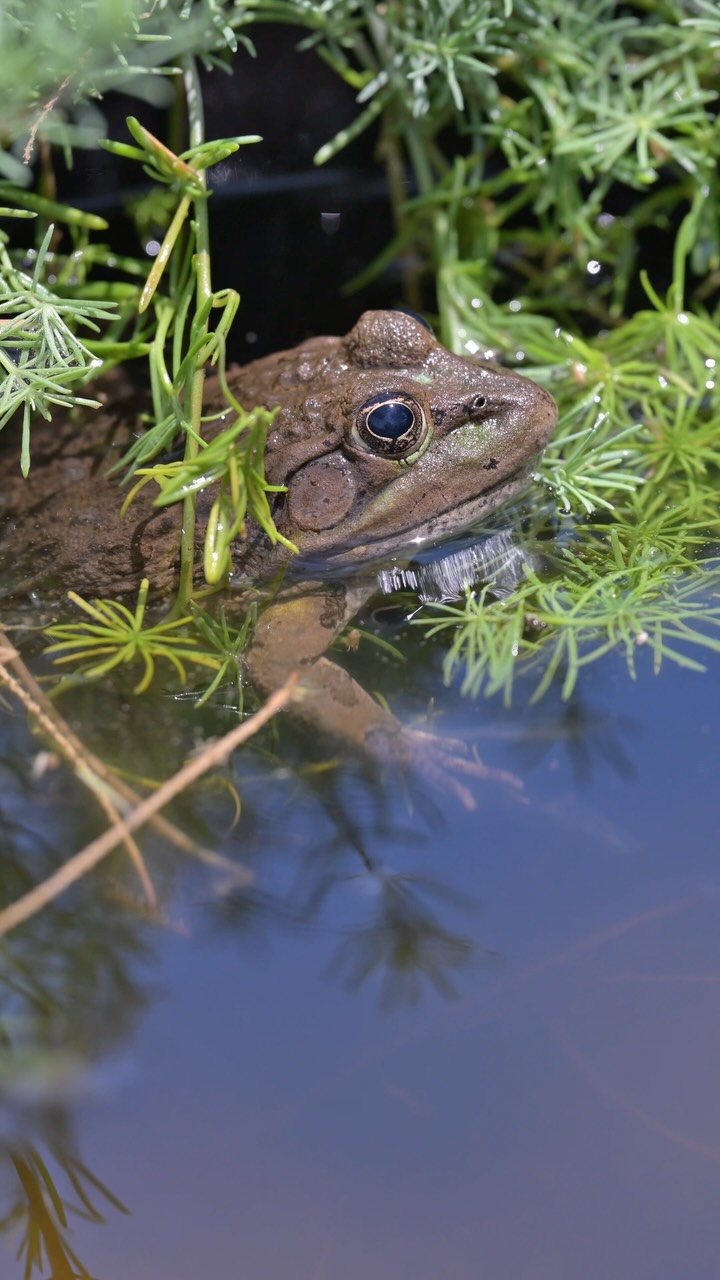- The significance of the Chiricahua leopard frog in its ecosystem
- Overview of the threats faced by the Chiricahua leopard frog population
- The role of the Phoenix Zoo’s Conservation Center in frog recovery
- The success story of releasing 30,000 frogs into the wild
- Conservation strategies and community involvement in protecting amphibians
The Chiricahua leopard frog, a species native to higher-elevation areas of Arizona, New Mexico, and parts of northern Mexico, plays an essential role in its ecosystem. As a predator of insects, these frogs help maintain the balance of insect populations, including potentially harmful species like mosquitoes. Additionally, they serve as an important food source for various predators, such as snakes, birds, and other mammals. Their presence can indicate water quality and environmental health, making them a valuable indicator species.
Despite their ecological importance, Chiricahua leopard frog populations have faced serious declines over the years. One of the primary threats has been the spread of chytrid fungus, a pathogen that has devastated amphibian populations worldwide. This disease affects the skin of frogs, which is vital for their respiration and hydration. Invasive species, particularly the American bullfrog, contribute to the decline of native frog populations. Bullfrogs compete for resources and can also introduce diseases. Additionally, habitat loss due to urbanization, agriculture, and drought has further intensified the plight of the Chiricahua leopard frog. The combination of these stressors has led to the species being listed as Threatened under the U.S. Endangered Species Act.
Recognizing the urgency of the situation, the Phoenix Zoo has established a Conservation Center to address the decline of the Chiricahua leopard frog. This facility focuses on breeding, rearing, and ultimately releasing these frogs into their natural habitats, aiming to recover wild populations. The program has seen tremendous success, with the release of 30,000 tadpoles, juveniles, and adult frogs since its inception. This remarkable achievement demonstrates the effectiveness of captive breeding and conservation efforts.
The process begins with collecting eggs from wild Chiricahua leopard frogs during their breeding season. These eggs are taken to the Conservation Center, where they are monitored and nurtured in a controlled environment. The staff employs specialized techniques to mimic natural conditions, which is crucial for successful development. When the tadpoles mature, they are released back into suitable habitats, which have been assessed for their ecological health. This careful attention to detail ensures that the frogs can thrive in their new homes.
The release of 30,000 frogs is a significant milestone, marking a considerable contribution to the recovery of the species. Each released frog helps to boost genetic diversity and population numbers in the wild. The success of this initiative highlights the importance of collaboration between zoos, wildlife agencies, and local communities in conservation efforts.
Community involvement is vital in the conservation of the Chiricahua leopard frog and other amphibians. Educational programs and outreach initiatives help raise awareness of the challenges these animals face. Engaging local residents can lead to better practices that protect frog habitats. Initiatives often include workshops about the ecological significance of frogs, the threats they face, and how individuals can contribute to their preservation.
In addition to community education, habitat restoration is an essential part of the conservation strategy. Protecting and restoring wetland habitats is crucial for the survival of the Chiricahua leopard frog. These areas provide essential breeding grounds and shelters that help sustain populations. Collaboration with local landowners, government agencies, and conservation organizations is key in achieving successful habitat restoration projects.
Brazilian scientists have also marked a notable achievement in amphibian conservation with innovative breeding techniques, which offer insights that could enhance existing methods. Such advancements can improve breeding outcomes in zoos and breeding centers, contributing to the overall health of amphibian populations, including the Chiricahua leopard frog.
Moreover, ongoing research into the effects of climate change on amphibians highlights the need for adaptive management strategies in conservation efforts. The impact of changing precipitation patterns, increasing temperatures, and habitat degradation requires a dynamic approach to ensure the long-term survival of these species.
The success of the Phoenix Zoo’s Conservation Center provides hope for the recovery of the Chiricahua leopard frog. The release of 30,000 frogs demonstrates the capabilities of modern conservation practices and serves as a model for other endangered species recovery programs. The combination of breeding, habitat restoration, and community engagement creates a comprehensive approach to conservation.
As this vital work continues, the partnership between scientists, wildlife managers, and the public will further strengthen initiatives aimed at preserving the Chiricahua leopard frog. By fostering understanding and appreciation for these amphibians, individuals can play an active role in the ongoing efforts to protect our planet’s biodiversity. The presence of the Chiricahua leopard frog in its natural habitat not only enriches the ecosystem but also serves as a reminder of the importance of conservation.
For those interested in supporting these efforts, numerous pathways exist. Volunteering at local zoos, participating in citizen science projects, and supporting conservation organizations can significantly impact amphibian conservation. Engaging with local schools and communities can enhance public understanding of the importance of these efforts, building a more knowledgeable and proactive society regarding wildlife preservation.
The legacy of the 30,000 frogs released into the wild echoes the commitment of conservationists and the community. Each frog represents a step toward a healthier ecosystem and a brighter future for amphibians. Conservation success stories, such as that of the Chiricahua leopard frog, not only inspire hope but also remind us of the ongoing responsibility to protect our natural world.
*****
Source Description
No. 30,000! 👏
Since the program began, 30,000 tadpoles, juveniles and adult frogs raised at the Phoenix Zoo’s Conservation Center have been released, helping recover wild populations.
Chiricahua leopard frogs are native to higher-elevation areas of Arizona, New Mexico and northern Mexico. They are listed as Threatened under the U.S. Endangered Species Act. Disease, especially from chytrid fungus is a major threat to these frogs. Invasive non-native species such as bullfrogs have also caused population declines, along with habitat loss and drought.
Like other amphibians, Chiricahua leopard frogs play important roles in their ecosystem. They control insect populations, including mosquitoes, and they serve as a food source for many different animals. As an indicator species, their presence or absence in an area can also serve as a warning about water quality issues.


